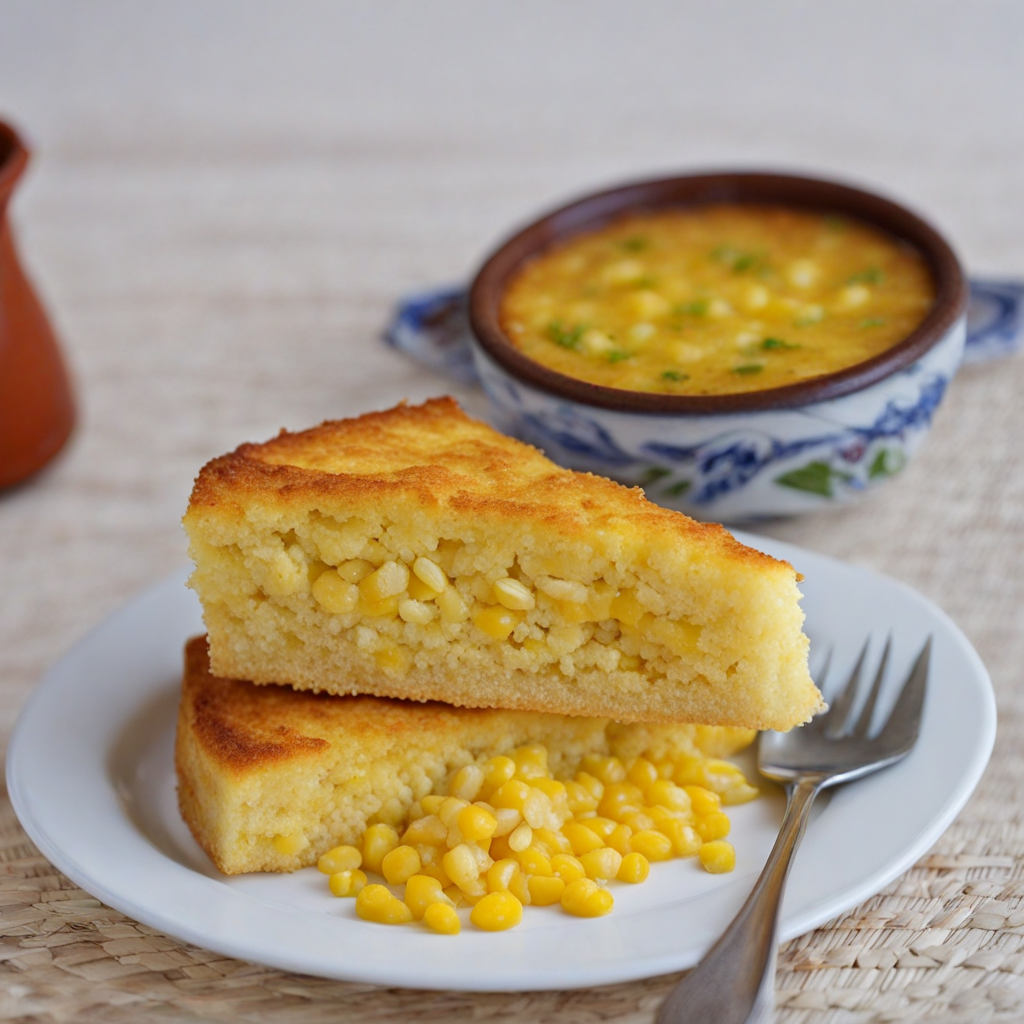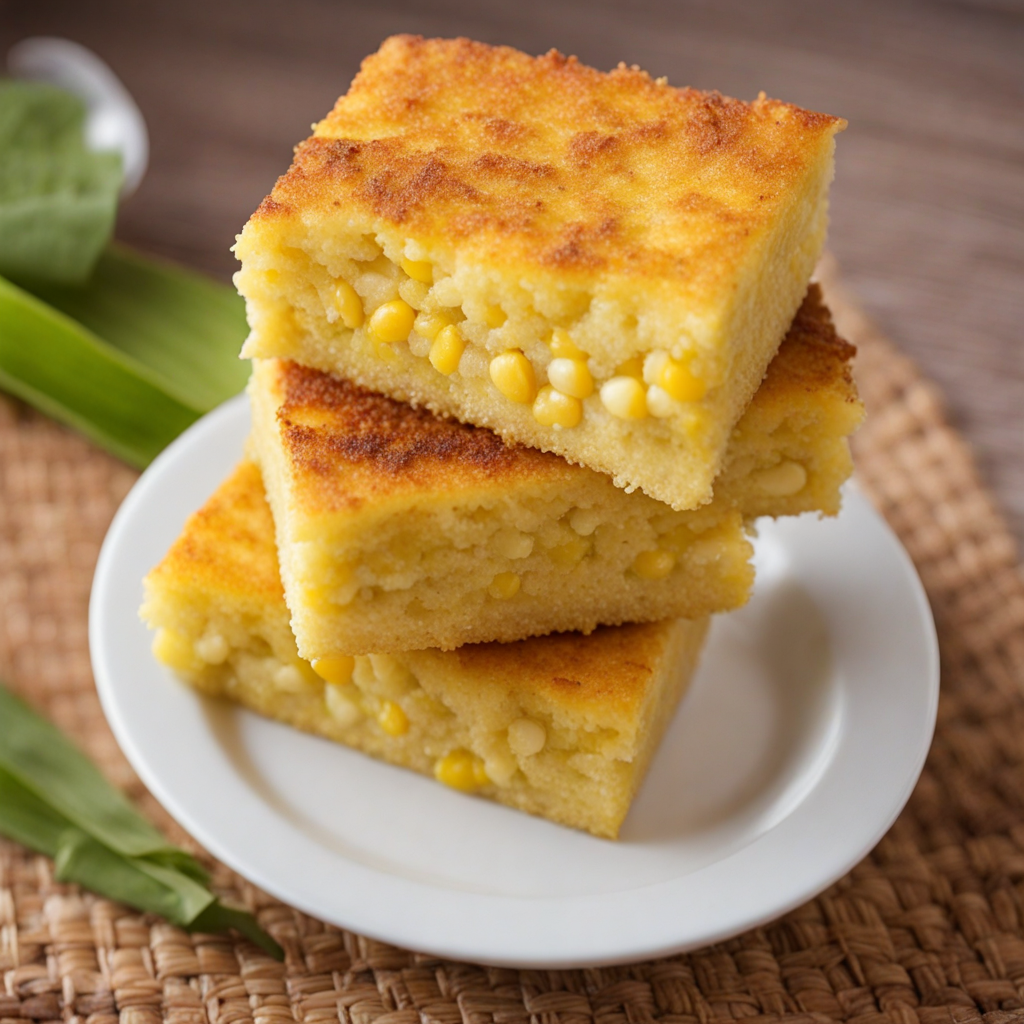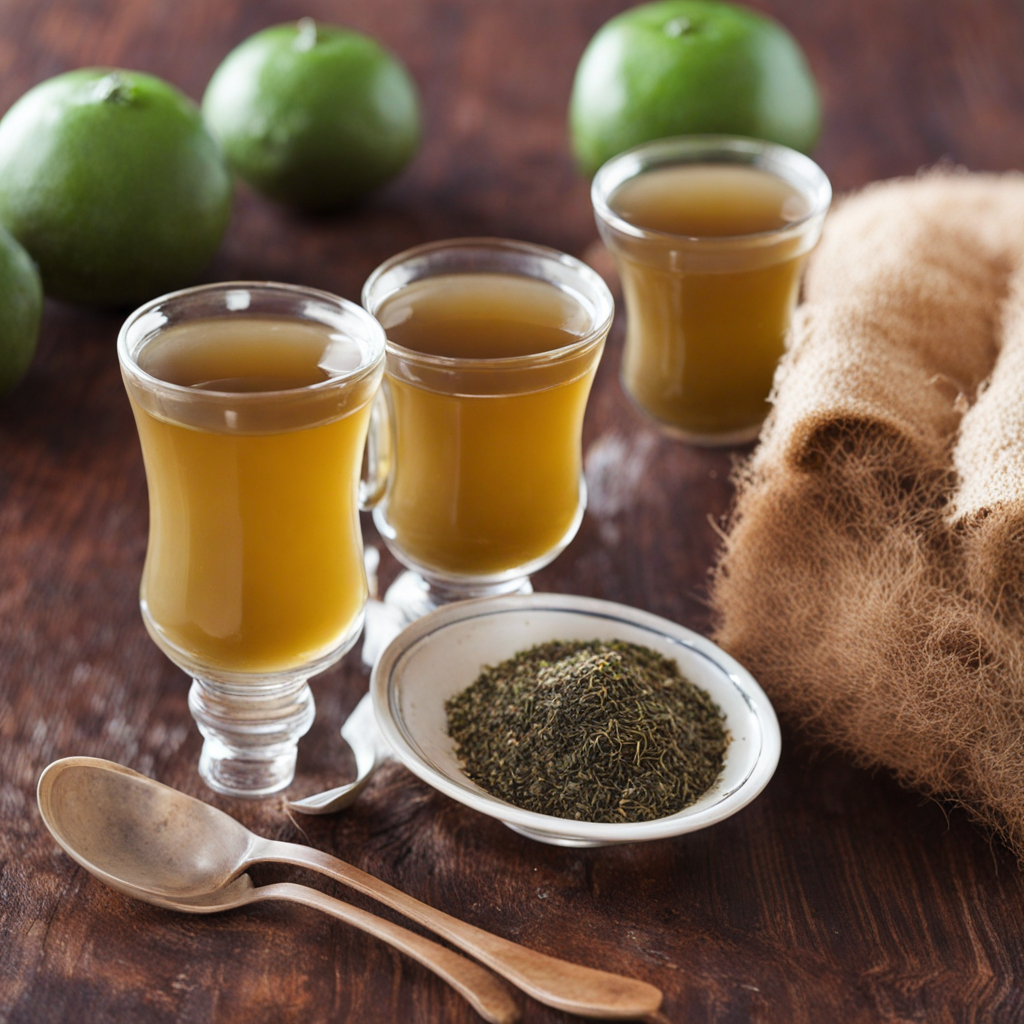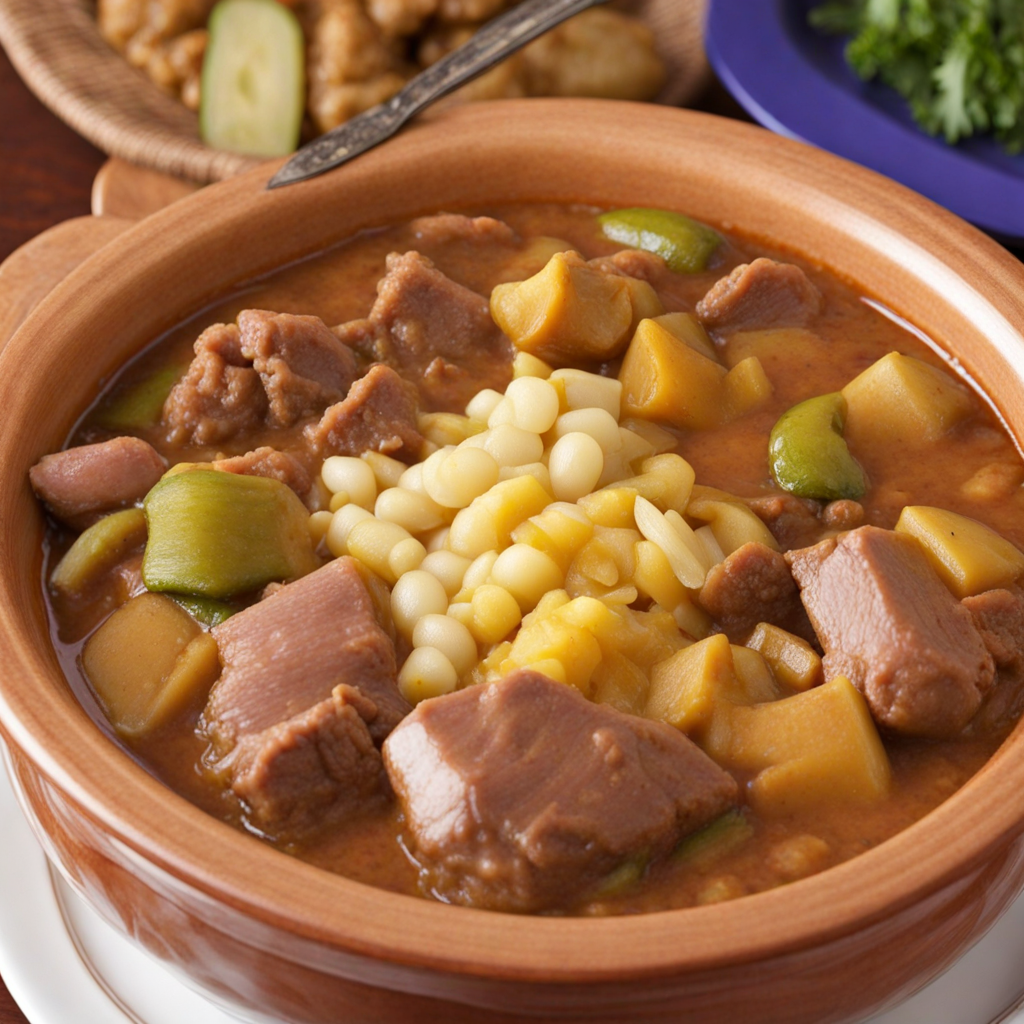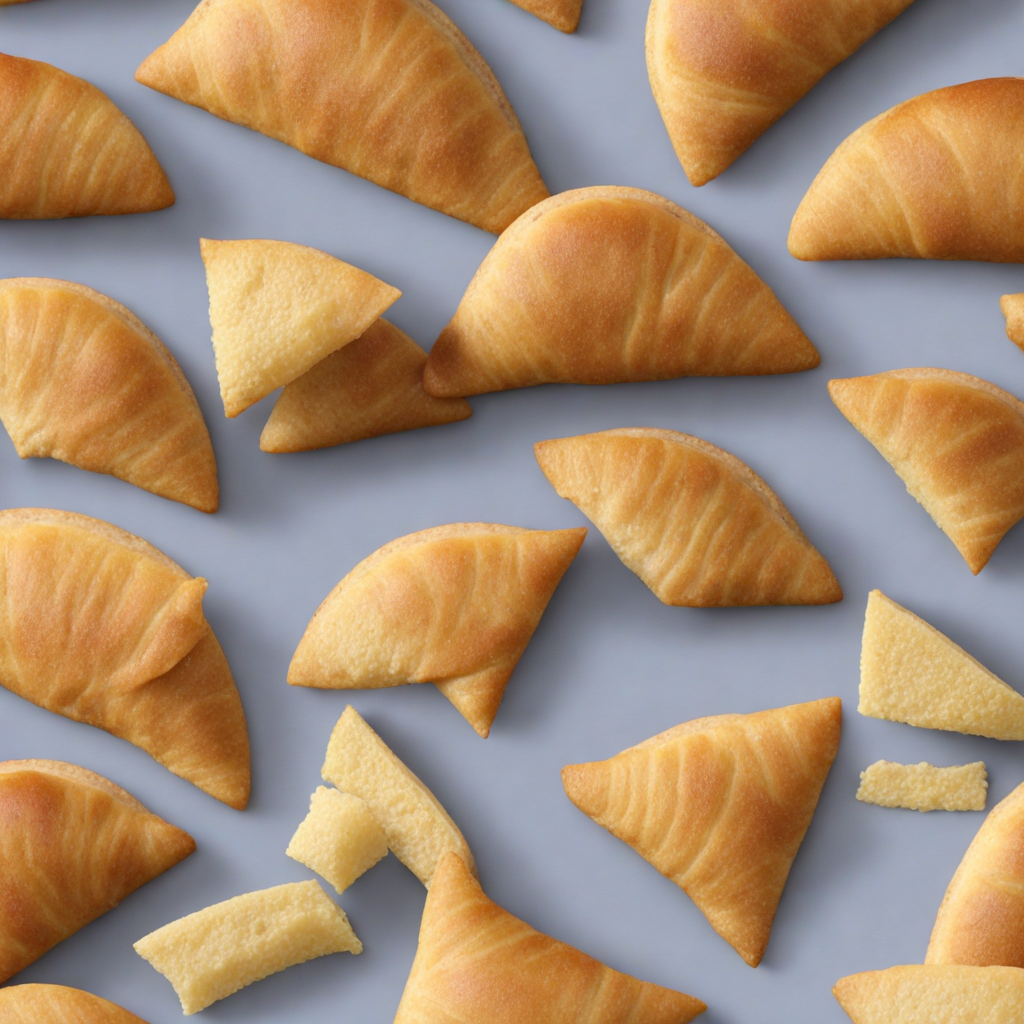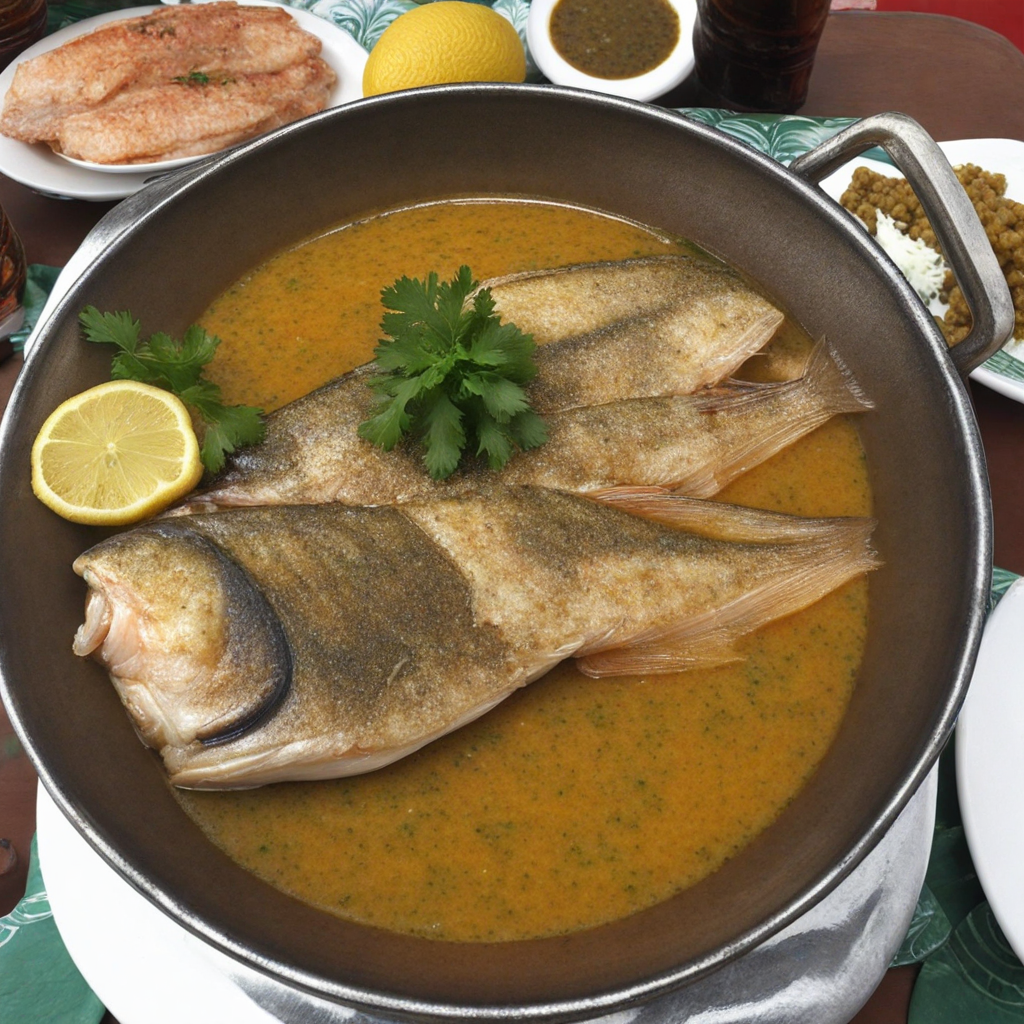Chipa Guasu
Chipa Guasu is a delightful traditional dish from Paraguay that embodies the rich culinary heritage of the region. This savory corn cake is made primarily from fresh corn, cheese, and eggs, which come together to create a moist and flavorful treat. The use of fresh corn not only imparts a natural sweetness to the dish but also provides a unique texture that sets it apart from other corn-based recipes. The cheese, often a local variety like Paraguay’s own “queso Paraguay,” melts beautifully, adding a creamy richness that complements the earthy flavors of the corn. The preparation of Chipa Guasu is relatively simple, making it a popular choice for home cooks. The ingredients are blended into a smooth batter, which is then poured into a baking dish and baked until golden brown and slightly puffed. The result is a dish that is crispy on the outside while remaining soft and custardy on the inside. Often enjoyed as a side dish or a snack, Chipa Guasu is versatile enough to be served warm, at room temperature, or even cold, making it perfect for gatherings or picnics. What truly makes Chipa Guasu special is its ability to evoke a sense of nostalgia and connection to Paraguayan culture. It's commonly served during festivals, family gatherings, and special occasions, reflecting the warmth and hospitality of the people. Each bite offers a taste of Paraguay's lush landscapes and rich agricultural traditions, making it a must-try for anyone looking to explore new flavors. Whether you’re a seasoned foodie or a curious novice, Chipa Guasu promises a unique culinary experience that is both comforting and satisfying.
How It Became This Dish
The History of Chipa Guasu: A Culinary Treasure from Paraguay Chipa Guasu is a traditional Paraguayan dish that exemplifies the rich culinary heritage of the country. This savory cornbread, made primarily from corn, cheese, and milk, has its roots deeply embedded in the cultural and agricultural practices of Paraguay, and it tells a story of the blending of indigenous and colonial influences. #### Origins of Chipa Guasu The origins of Chipa Guasu can be traced back to the indigenous Guaraní people, who have inhabited the region for centuries. The Guaraní were skilled agriculturalists and relied heavily on maize, which was a staple of their diet. They cultivated several varieties of corn, and it played a crucial role in their culinary traditions. Corn was not only a source of sustenance but also held cultural significance, as it was intertwined with their spiritual beliefs and rituals. The word "chipa" is derived from the Guaraní language, indicating its indigenous roots. Traditionally, the term refers to various types of bread made from cornmeal, and it encompasses a wide range of recipes that vary by region and community. The suffix "guasu," meaning "big" in Guaraní, refers specifically to the larger, cake-like version of the dish that we know today. In the colonial era, Spanish influences began to permeate the local food culture as settlers introduced new ingredients and cooking techniques. Dairy products, particularly cheese, became more commonplace, and their incorporation into traditional dishes like Chipa Guasu marked a significant evolution. The blending of indigenous corn-based recipes with European dairy transformed Chipa Guasu into the dish we recognize today. #### Cultural Significance Chipa Guasu is more than just a food item; it is a symbol of Paraguayan identity and community. It is often prepared for special occasions, family gatherings, and festivals, serving as a bridge between generations. The dish is synonymous with warmth, hospitality, and shared experiences, highlighting the importance of communal meals in Paraguayan culture. In rural areas, families often gather to prepare Chipa Guasu together, reflecting a strong sense of community. The process of making the dish fosters connections among participants, as they share stories, laughter, and traditions passed down through the years. This communal aspect of preparing and sharing food is a vital part of Paraguay's cultural fabric, emphasizing the significance of food in social bonding and cultural preservation. Chipa Guasu is also closely associated with religious and cultural festivities. It is a staple during the Feast of the Virgin of Caacupé, Paraguay's patron saint, as well as during Christmas and New Year's celebrations. The dish embodies a sense of nostalgia and continuity, evoking memories of family traditions and communal gatherings. #### The Development Over Time As Paraguay evolved through the 20th and into the 21st century, so too did Chipa Guasu. The dish has remained a beloved staple, but variations have emerged, reflecting the changing tastes and lifestyles of Paraguayans. Urbanization and globalization have influenced the way Chipa Guasu is prepared and consumed, leading to adaptations that cater to contemporary palates. In traditional preparations, Chipa Guasu was often baked in a clay oven, imparting a unique flavor and texture. Today, while some still adhere to these traditional methods, others have embraced modern cooking appliances, such as electric ovens, which allow for more convenience and efficiency. This shift has made the dish more accessible to a wider audience, allowing families in urban areas to enjoy Chipa Guasu without the need for elaborate preparations. Another significant development has been the diversification of ingredients used in the dish. While the classic recipe includes corn, cheese, milk, eggs, and sometimes onions, contemporary versions might incorporate additional ingredients such as herbs, spices, or even vegetables, allowing for creative interpretations. This adaptability has ensured that Chipa Guasu remains relevant in a fast-paced world where culinary experimentation is celebrated. Despite these modernizations, there remains a strong adherence to the core elements of Chipa Guasu. The dish's fundamental flavor profile, characterized by the sweetness of corn and the savory richness of cheese, remains intact, preserving its cultural essence. Moreover, the traditional preparation methods and communal cooking practices continue to be valued, reinforcing the importance of food as a means of connecting with heritage and community. #### Conclusion: A Culinary Legacy Chipa Guasu is a living testament to Paraguay's rich cultural tapestry, representing the convergence of indigenous and colonial culinary traditions. Its evolution over time reflects broader social changes while maintaining its significance as a symbol of community and identity. Today, Chipa Guasu continues to be a cherished dish that brings people together, transcending generations and adapting to modern culinary landscapes. As Paraguayans and food enthusiasts around the world embrace Chipa Guasu, they are not only indulging in a delicious corn-based dish but also participating in the preservation of a cultural legacy. Each bite of Chipa Guasu serves as a reminder of the resilience and creativity of the Paraguayan people, ensuring that this culinary treasure will continue to be celebrated for generations to come. Through Chipa Guasu, the flavors of Paraguay endure, inviting all to partake in its rich history and vibrant culture.
You may like
Discover local flavors from Paraguay


